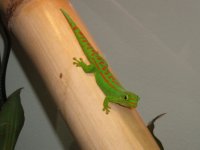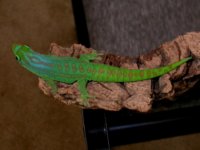Magnus is right,
maybe I made it too short.
Anyhow, when recommending high doses of vitamine A. I of course imply that there is an awareness for the therapeutic window of this vitamine in Phelsuma. Of course "high" here is a relative recommendation to what is present in your standard Phelsuma food sources.
Please correct me, if I am wrong, but to my experience and knowledge, a dose of 100 iu/(week*kg) supplementary vitamine A is safe for Phelsuma, even if given on a regular basis.
With respect to D3, for Phelsuma I am convinced that there is no need to dose more than 50 iu/(week*kg) but threefold this dosis still is safe.
With respect to bright lights, to my experience, especially green and blue scale colouring has a high chance of responding well to almost natural light intensities (including UVA but not necessarily UVB parts of the spectrum).
I hope this more precisely expresses my opinion on the topic in question.
And again, Magnus is absolutely right stressing the risk in overdosing lipophilic vitamines. The same is true for referring to observation, that in some Phelsuma (eg cepediana), even with bright lights and balanced supplementation, captive specimens still loose color. But even in these cases, my impression is that colours at least benefit to some extend from these measures. Meaning they do not reach or fully maintain "wild habitat" colouration, but come closer to that than without such arrangements
BR
Ingo



